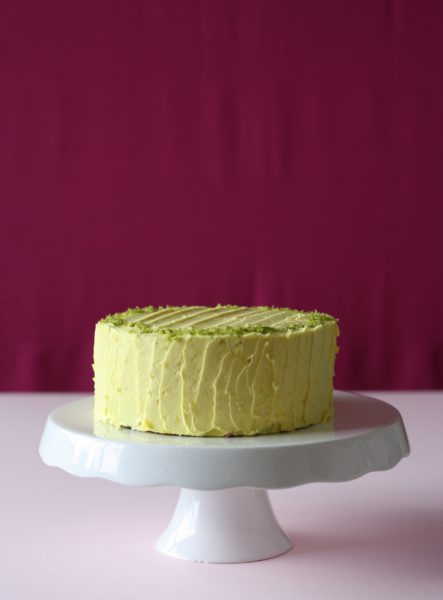I often get asked how I get my cakes so smooth and I have to tell you that it’s a bit like DIY. It’s all in the preparation. If you don’t sand and fill in the holes on your walls before you paint then you are always going to see those lumps and bumps. Well with cake decorating it’s all about the crumb coating.

What’s a Crumb coating
Basically it’s a thin layer of buttercream that you apply to a cake to stop the loose crumbs from coming off of the cakes outter edge before you give it a really good layer of buttercream. The cake is coated in a thin layer which is smoothed as much as possible. This needs to be done gently as very fresh sponge can so easily crumble, especially my chocolate cake recipe. The cake is then popped into the fridge for 20 minutes to harden up. This gives the cake a kind of coat of armour. When you take the cake out of the fridge the buttercream crumb coat has firmed up enough to prevent crumbs coming off when you add a proper layer of buttercream. This second layer can be smoothed perfectly. It’s also where you can hide any inperfections. If there are deep holes, wonky layers or uneven fillings you can add buttercream and smooth it to hide everything. No one will ever know!
Once the second layer of buttercream has been applied and smoothed you can pop the cake bake in the fridge for 10 minutes to harden again or go straight to the sugarpaste/ marzipan covering.
I don’t like to leave cakes in the fridge for a long time as it alters the taste and consistency, but by adding these two buttercream coats the sugarpaste has a really firm and flat base to sit on. Since mastering this technique my cakes look much more professional. It’s also an essential step when decorating a shaped cake. It makes life a whole lot easier.
How to do a Crumb coating.
Here are the steps to doing a crumb coating from the cake I made for Dahlia How to make a sprinkle cake (you know the one that fell over!)
1. Once your cake is stacked and filled or shaped add a thin layer of buttercream to the outside edge. I used buttercream to ensure where each layer was filled looked nice and flat. I then scraped off the excess. Pop the cake in the fridge for 20 minutes.
2. Remove the cake from the fridge. The crumb coating is now firm to the touch and acts as a base for the real buttercream coating. This coating can be for decoration or as a base for marzipan or sugarpaste.
3. Use a side scraper to give a perfectly smooth finish even if you are covering it in sugarpaste and no one will see it. The better the finish here the better the final result will be.
4. Pop the cake in the fridge for a little longer so handling the cake is easier then complete your decorations.
Good luck crumbless bakers
EmmaMT
x
More Cake Decorating Posts you may enjoy
How to cover a cake in chocolate ganache
What size eggs should I use for baking?
How to make a Mario and Yoshie Birthday Cake
How much sugar paste do I need ?







You forgot to mention the step of rearranging your whole fridge to get the damn thing to fit in… 😉 x
Hi Emma, I’m going to do this with the cake I’m making at the weekend so fingers crossed! I wanted to ask, I’m making a number 1 cake that has no filling and I was going to put some apricot jam along with the butter cream to give it more flavour so it’s not all icing. Will it be ok to add the jam on top of the second coat of buttercream and then add the icing? Or is there a better way of doing this? Thank you 🙂
Hi Emma, I have just made the Madeira cake following your chart for a 12″ cake and I must say it has come out looking rather good. I baked it for exactly 2 hours. Next step is the buttercream tomorrow and the fondant icing. As I have got to cut the cake into a butterfly shape I am a bit nervous as to how the fondant icing is going to fall. I will let you know how I get on.
Now I am off to the shop yet again for more butter not thinking about the quantity I would need for such a large cake!!
So? How did it go?